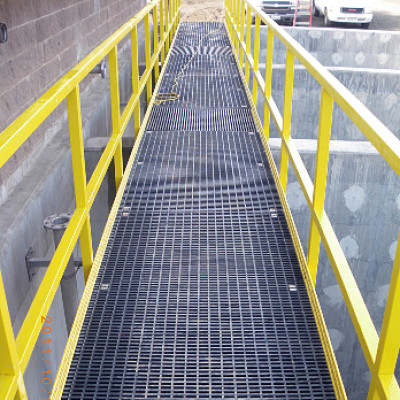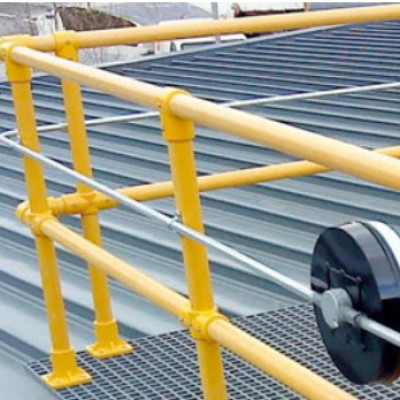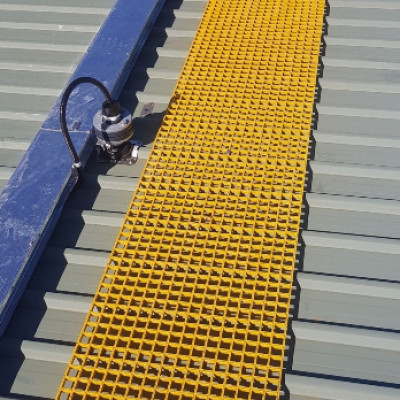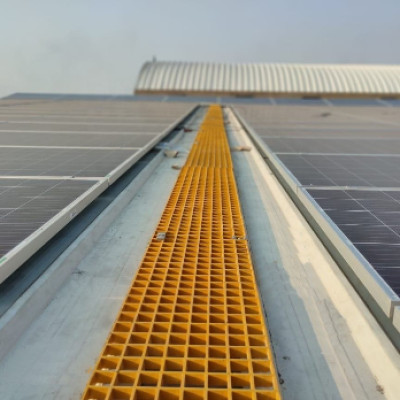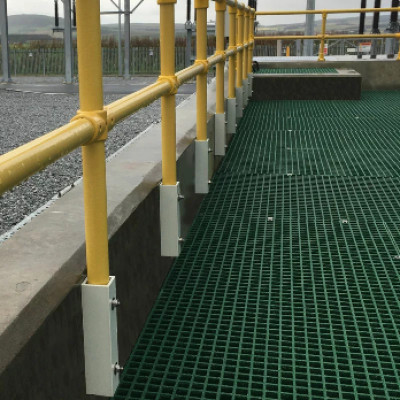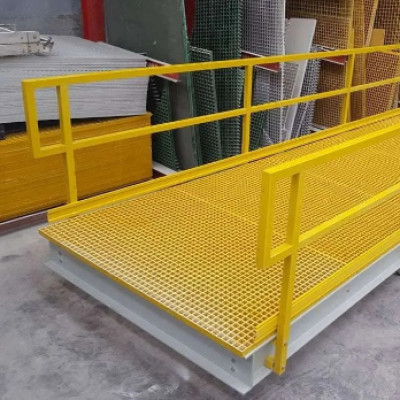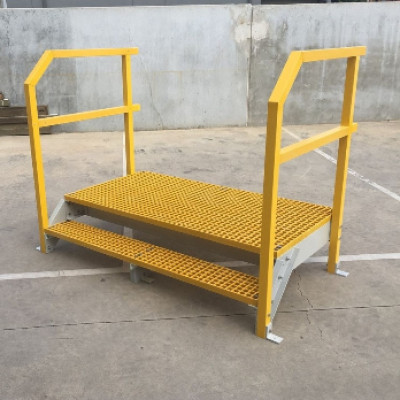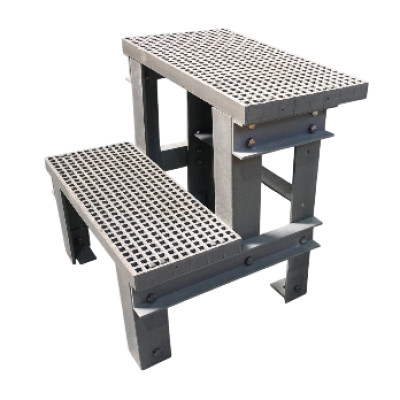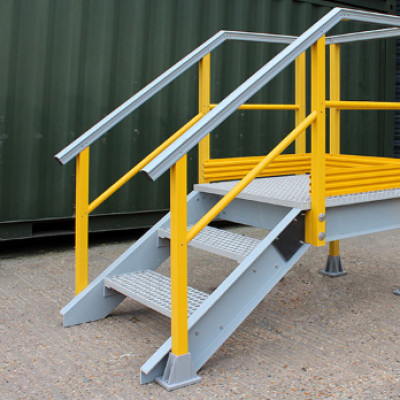FRP Walkways and Equipment Platform
FRP WALK WAYS
Fiberglass Reinforced Polymer FRP walkways are a type of flooring system made using a composite material that consists of glass fibers embedded in a polymer matrix (such as epoxy or polyester resin). These walkways are widely used in industrial, commercial, and infrastructure projects due to their durability, resistance to corrosion, lightweight nature, and easy maintenance.
Applications of FRP Walkways:
- Industrial Platforms: Used in chemical plants, offshore platforms, and oil rigs, where corrosion is a major concern.
- Marine Walkways: Commonly used for docks, piers, and jetties due to their resistance to seawater corrosion.
- Pedestrian Bridges: Lightweight and durable option for pedestrian footbridges.
- Public Spaces: Ideal for high-traffic areas in commercial buildings or urban parks due to their low maintenance and slip resistance.
FRP EQUIPMENT ACCESS PLATFORM
Fiberglass Reinforced Polymer FRP equipment access platforms are critical structures used in industrial, commercial, and infrastructure settings, offering a safe, durable, and corrosion-resistant alternative to traditional materials like steel or concrete. These platforms provide access to equipment, machinery, or elevated areas, especially in environments where corrosion from chemicals, water, or salt is a concern.
FRP platforms are lightweight, with a typical density of 1.6 to 2.0 g/cm³, much lower than steel or concrete.
Anti-Slip Surface: The walking surface is usually treated with a textured pattern or coating (e.g., raised diamond patterns, grit coating) to prevent slips, especially in wet or oily environments.
Guardrails and Handrails: Platforms often include integrated guardrails and handrails, which are essential for safety. These can be fixed or removable, depending on the design.
Toe Boards: Installed around the edge of the platform to prevent tools or equipment from falling off.
Modular Design: Many FRP platforms are modular, allowing for easy adjustment in size and configuration to fit specific access needs.
Corrosion Resistance: One of the primary benefits of FRP is its ability to resist corrosion from harsh chemicals, acids, salts, and moisture. This makes it ideal for environments such as chemical plants, offshore platforms, and water treatment facilities.
UV Resistance: FRP materials are typically UV-resistant, though additional protective coatings can be applied for enhanced durability when exposed to direct sunlight.
Fire Resistance: FRP can be fire-retardant, with certain resins offering Class 1 or Class A fire ratings. Fire-resistant resins or coatings can be used to meet specific fire safety requirements.
Smooth or Textured: For added safety, the top surface is often textured to prevent slipping.
Color Options: Common colors include gray, black, and safety yellow (for high-visibility applications), though custom colors can be manufactured.
Modular System: Most FRP platforms are modular and can be assembled on-site. The modular nature allows for customization in both size and configuration.
FRP platforms require minimal maintenance, as they are resistant to corrosion, rust, and degradation from chemicals and moisture. Regular cleaning with non-abrasive methods is sufficient.
Since they are non-conductive, FRP platforms are safe to use in electrical environments, reducing the need for specialized maintenance.
Applications:
- Chemical and Petrochemical Plants: Ideal for use in areas exposed to corrosive substances.
- Offshore Platforms: Perfect for environments where exposure to seawater and extreme conditions is common.
- Water Treatment Facilities: FRP is used in areas where water exposure and corrosive chemicals are present.
- Renewable Energy: FRP is used in wind turbine platforms and solar installations.
- Industrial Equipment Access: Provides safe and stable access to industrial machinery
